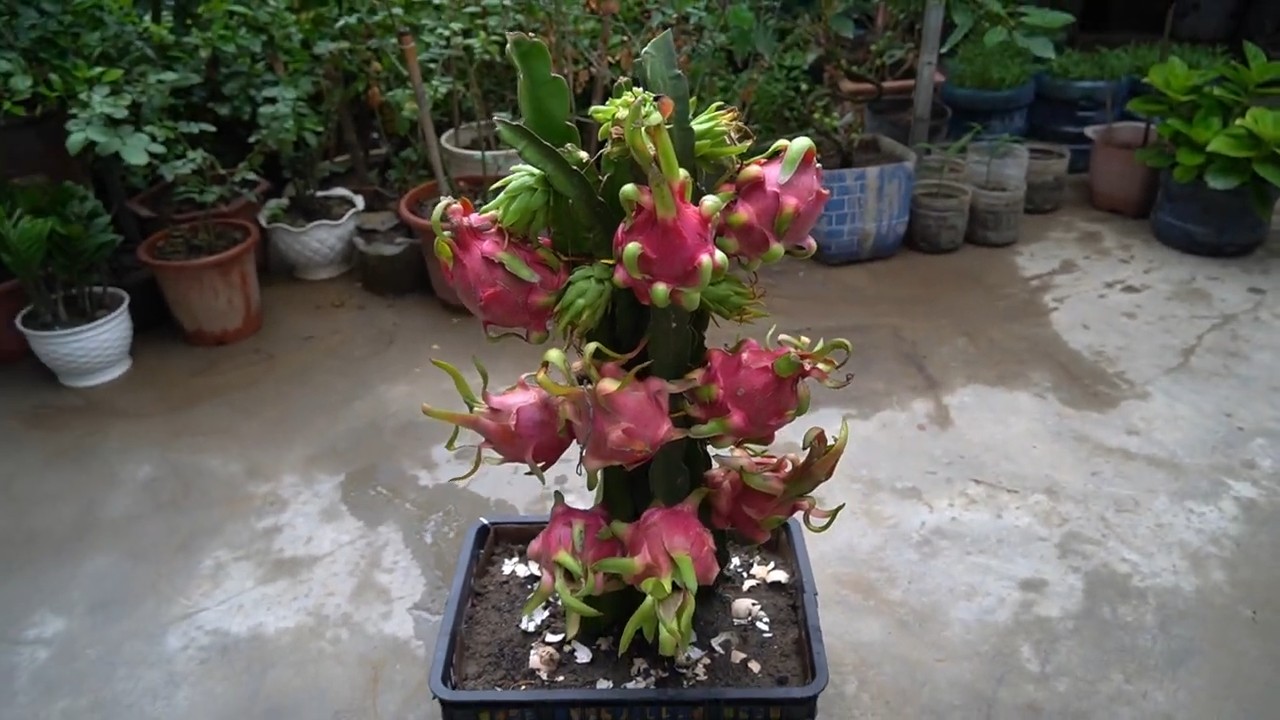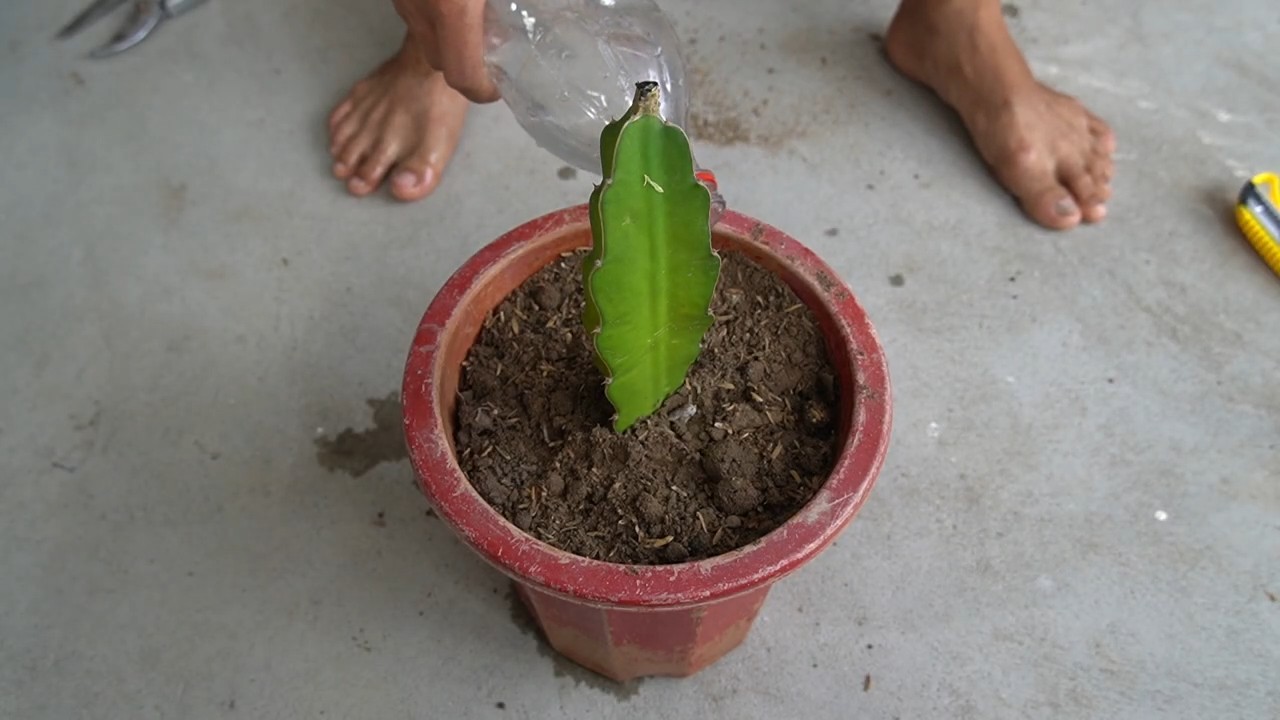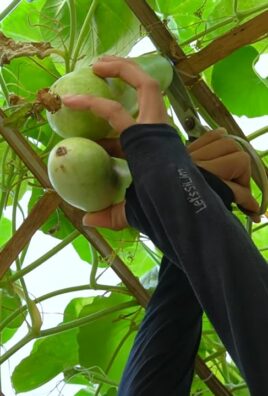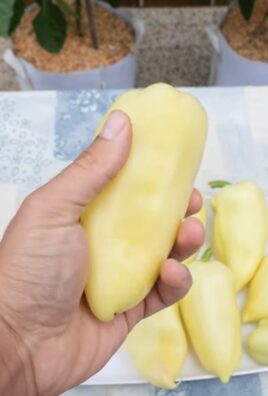Dragon Fruit Propagation from Cuttings: Ever dreamt of having your own exotic dragon fruit vine, bursting with vibrant pink fruit? Imagine plucking a sweet, juicy dragon fruit straight from your backyard – it’s easier than you think! This DIY guide will unlock the secrets to successfully propagating dragon fruit from cuttings, transforming your garden into a tropical paradise.
For centuries, dragon fruit, also known as pitaya, has been cultivated in Southeast Asia and Latin America, prized for its unique appearance and delicious flavor. Bringing this exotic fruit into your home garden is a rewarding experience, connecting you to a rich agricultural history. But why spend a fortune on mature plants when you can easily create your own using cuttings?
Many gardeners find the prospect of propagating new plants intimidating, but fear not! This method is surprisingly simple and cost-effective. With just a few basic tools and our step-by-step instructions, you’ll be well on your way to expanding your dragon fruit collection. Plus, learning dragon fruit propagation from cuttings allows you to control the genetic lineage of your plants, ensuring you get the specific variety you desire. So, let’s dive in and discover the magic of growing your own dragon fruit!

Drachenfrucht aus Stecklingen ziehen: Dein DIY-Leitfaden für eine üppige Ernte
Hey Pflanzenfreunde! Habt ihr euch jemals gefragt, wie ihr diese exotische, leuchtend pinke Frucht, die Drachenfrucht, selbst anbauen könnt? Ich zeige euch, wie ihr das ganz einfach mit Stecklingen hinbekommt! Es ist einfacher als ihr denkt und macht super viel Spaß. Lasst uns loslegen!
Was du brauchst: Deine Werkzeugkiste für den Drachenfrucht-Erfolg
Bevor wir loslegen, hier eine Liste mit allem, was du brauchst. Keine Sorge, die meisten Sachen hast du wahrscheinlich schon zu Hause!
* Ein gesundes Drachenfrucht-Mutterpflanze: Am besten von einer Pflanze, die schon Früchte getragen hat. So weißt du, dass sie vital ist.
* Scharfe, saubere Gartenschere oder ein Messer: Hygiene ist wichtig, um Krankheiten zu vermeiden.
* Bewurzelungshormon (optional, aber empfohlen): Das hilft den Stecklingen, schneller Wurzeln zu bilden.
* Töpfe: Am besten eignen sich Töpfe mit guter Drainage.
* Kaktus- oder Sukkulentenerde: Drachenfrüchte lieben gut durchlässigen Boden.
* Wasser: Zum Befeuchten der Erde.
* Sprühflasche: Für die regelmäßige Befeuchtung der Stecklinge.
* Stützpfähle (optional): Drachenfrüchte sind Kletterpflanzen, also kann ein Pfahl helfen, sie zu stützen.
* Geduld: Das Wichtigste überhaupt!
Die Auswahl des perfekten Stecklings: Der Schlüssel zum Erfolg
Die Auswahl des richtigen Stecklings ist entscheidend. Achte auf folgende Punkte:
* Gesundes Aussehen: Der Steckling sollte kräftig grün und frei von Flecken oder Beschädigungen sein.
* Reife: Wähle einen Steckling, der mindestens 20-30 cm lang ist. Ältere, leicht verholzte Triebe sind oft besser geeignet.
* Knotenpunkte: Achte darauf, dass der Steckling mehrere Knotenpunkte hat, da hier die Wurzeln entstehen werden.
Schritt-für-Schritt-Anleitung: So ziehst du deine eigenen Drachenfruchtpflanzen
Jetzt geht’s ans Eingemachte! Hier ist eine detaillierte Anleitung, wie du deine Drachenfrucht-Stecklinge zum Wurzeln bringst:
1. Steckling schneiden:
* Wähle einen gesunden Trieb an deiner Mutterpflanze aus.
* Schneide mit deiner sauberen Gartenschere oder dem Messer einen Steckling von mindestens 20 cm Länge ab.
* Der Schnitt sollte sauber und schräg sein, um die Wasseraufnahme zu erleichtern.
* Entferne die unteren Dornen am Steckling, da diese im Boden verrotten könnten.
2. Steckling vorbereiten:
* Lass den Steckling 5-7 Tage an einem trockenen, schattigen Ort abtrocknen. Das hilft, die Schnittstelle zu versiegeln und Fäulnis zu verhindern. Dieser Schritt ist sehr wichtig!
* Nach dem Trocknen kannst du optional Bewurzelungshormon auf die Schnittfläche auftragen. Das beschleunigt die Wurzelbildung.
3. Topf vorbereiten:
* Fülle den Topf mit Kaktus- oder Sukkulentenerde. Diese Erde ist gut durchlässig und verhindert Staunässe.
* Befeuchte die Erde leicht. Sie sollte feucht, aber nicht nass sein.
4. Steckling einpflanzen:
* Stecke den Steckling etwa 5-7 cm tief in die Erde.
* Drücke die Erde leicht an, um den Steckling zu stabilisieren.
5. Pflege nach dem Einpflanzen:
* Stelle den Topf an einen hellen, aber nicht direkt sonnigen Ort. Direkte Sonneneinstrahlung kann die Stecklinge verbrennen.
* Besprühe die Stecklinge regelmäßig mit Wasser, um die Luftfeuchtigkeit zu erhöhen.
* Gieße die Erde nur, wenn sie sich trocken anfühlt. Staunässe ist der größte Feind der Drachenfrucht.
6. Geduld haben:
* Es kann einige Wochen bis Monate dauern, bis die Stecklinge Wurzeln bilden. Hab Geduld und gib nicht auf!
* Du kannst vorsichtig an dem Steckling ziehen, um zu prüfen, ob er Wurzeln gebildet hat. Wenn er Widerstand leistet, hat er Wurzeln geschlagen!
Die Bewurzelungsphase: Worauf du achten musst
Die Bewurzelungsphase ist entscheidend. Hier sind ein paar Tipps, um sicherzustellen, dass deine Stecklinge erfolgreich Wurzeln schlagen:
* Temperatur: Drachenfrüchte lieben Wärme. Eine Temperatur zwischen 20 und 30 Grad Celsius ist ideal für die Wurzelbildung.
* Luftfeuchtigkeit: Eine hohe Luftfeuchtigkeit fördert die Wurzelbildung. Du kannst die Luftfeuchtigkeit erhöhen, indem du die Stecklinge regelmäßig besprühst oder den Topf in ein Mini-Gewächshaus stellst.
* Licht: Helles, indirektes Licht ist ideal. Vermeide direkte Sonneneinstrahlung, da diese die Stecklinge verbrennen kann.
* Gießen: Gieße sparsam. Die Erde sollte feucht, aber nicht nass sein. Staunässe führt zu Fäulnis.
* Belüftung: Sorge für eine gute Belüftung, um Schimmelbildung zu vermeiden.
Umpflanzen: Wenn die Wurzeln stark genug sind
Sobald die Stecklinge gut bewurzelt sind (du kannst das sehen, wenn neue Triebe wachsen), kannst du sie in größere Töpfe umpflanzen.
1. Topf vorbereiten: Wähle einen Topf, der etwas größer ist als der vorherige. Fülle ihn mit Kaktus- oder Sukkulentenerde.
2. Steckling vorsichtig aus dem alten Topf nehmen: Achte darauf, die Wurzeln nicht zu beschädigen.
3. Steckling in den neuen Topf pflanzen: Fülle den Topf mit Erde auf und drücke sie leicht an.
4. Gießen: Gieße die Pflanze nach dem Umpflanzen gründlich.
Pflege der jungen Drachenfruchtpflanze: So bleibt sie gesund und stark
Nach dem Umpflanzen ist es wichtig, die junge Drachenfruchtpflanze richtig zu pflegen, damit sie gesund und stark wächst.
* Standort: Stelle die Pflanze an einen sonnigen Standort. Drachenfrüchte lieben Sonne, aber schütze sie vor der Mittagssonne im Hochsommer.
* Gießen: Gieße die Pflanze regelmäßig, aber lass die Erde zwischen den Wassergaben abtrocknen.
* Düngen: Dünge die Pflanze während der Wachstumsperiode (Frühling und Sommer) alle zwei Wochen mit einem Kaktus- oder Sukkulentendünger.
* Stützen: Drachenfrüchte sind Kletterpflanzen und brauchen eine Stütze. Du kannst einen Pfahl oder ein Rankgitter verwenden.
* Überwintern: Im Winter solltest du die Pflanze an einen kühlen, hellen Ort stellen und weniger gießen.
Häufige Probleme und Lösungen: Was tun, wenn etwas schief geht
Auch beim Drachenfrucht-Anbau können Probleme auftreten. Hier sind einige häufige Probleme und ihre Lösungen:
* Fäulnis: Fäulnis ist oft die Folge von Staunässe. Achte darauf, dass die Erde gut durchlässig ist und gieße sparsam. Wenn Fäulnis auftritt, schneide die betroffenen Stellen ab und topfe die Pflanze in frische Erde um.
* Schädlinge: Drachenfrüchte können von Schädlingen wie Wollläusen oder Spinnmilben befallen werden. Bekämpfe die Schädlinge mit einem geeigneten Insektizid oder mit natürlichen Mitteln wie Neemöl.
* Gelbe Blätter: Gelbe Blätter können ein Zeichen für Überwässerung, Nährstoffmangel oder zu wenig Licht sein. Überprüfe deine Pflege und passe sie gegebenenfalls an.
Geduld zahlt sich aus: Bald kannst du deine eigenen Drachenfrüchte ernten!
Es dauert zwar ein paar Jahre, bis deine Drachenfruchtpflanze Früchte

Conclusion
So, there you have it! Propagating dragon fruit from cuttings is not just a cost-effective way to expand your collection of this exotic fruit, it’s also an incredibly rewarding experience. Imagine the satisfaction of nurturing a small cutting into a thriving plant, laden with vibrant, delicious dragon fruit. This DIY trick transforms a simple cutting into a future harvest, bringing a touch of the tropics right to your backyard or balcony.
But why is this method a must-try? Firstly, it’s significantly faster than growing dragon fruit from seeds. Seed-grown plants can take several years to mature and bear fruit, whereas cuttings, under the right conditions, can produce fruit much sooner. Secondly, you’re essentially cloning the parent plant, ensuring that the new plant will inherit its desirable characteristics, such as fruit size, color, and flavor. This is particularly important if you’re starting with a dragon fruit variety you already know and love. Finally, it’s an incredibly accessible method. You don’t need any specialized equipment or a green thumb of steel. With a few simple tools, some well-draining soil, and a little patience, you can successfully propagate dragon fruit from cuttings.
Don’t be afraid to experiment with variations! Try rooting your cuttings in different mediums, such as perlite or vermiculite, to see which works best for you. You can also experiment with different rooting hormones to potentially speed up the process. Consider the size of your cutting as well. Larger cuttings may root more readily, but smaller cuttings can also be successful. The key is to provide the right environment: warmth, humidity, and indirect sunlight.
Remember, the success of your dragon fruit propagation depends on consistent care and attention. Keep the soil consistently moist, but not waterlogged, and protect your cuttings from extreme temperatures and direct sunlight. Regularly check for signs of root development, and be patient! Rooting can take several weeks, so don’t be discouraged if you don’t see results immediately.
We wholeheartedly encourage you to try this DIY trick for dragon fruit propagation. It’s a fun, educational, and ultimately fruitful endeavor. Once you’ve successfully propagated your own dragon fruit plants, we’d love to hear about your experience! Share your tips, tricks, and photos in the comments below. Let’s build a community of dragon fruit enthusiasts and learn from each other’s successes and challenges. Happy growing!
Frequently Asked Questions (FAQ)
What is the best time of year to propagate dragon fruit from cuttings?
The ideal time to propagate dragon fruit from cuttings is during the warmer months, typically spring or early summer. This is when the plant is actively growing, and the warmer temperatures and longer daylight hours promote faster root development. However, with proper care and environmental control (such as using a greenhouse or grow lights), you can propagate dragon fruit cuttings at other times of the year as well. Just be aware that the rooting process may take longer during cooler months.
How long does it take for dragon fruit cuttings to root?
Rooting time can vary depending on several factors, including the size of the cutting, the environmental conditions, and the specific dragon fruit variety. Generally, you can expect to see roots developing within 2-4 weeks. However, it can sometimes take longer, up to 6-8 weeks, for roots to become well-established. Be patient and avoid disturbing the cuttings too frequently, as this can hinder root development.
What type of soil is best for rooting dragon fruit cuttings?
Dragon fruit plants require well-draining soil to prevent root rot. A good potting mix for rooting cuttings should be light and airy, allowing for good aeration and drainage. A mixture of perlite, peat moss, and coarse sand is often recommended. You can also use a commercially available cactus or succulent potting mix. Avoid using heavy clay soils, as these can retain too much moisture and lead to root rot.
How often should I water dragon fruit cuttings?
Water dragon fruit cuttings regularly, keeping the soil consistently moist but not waterlogged. The frequency of watering will depend on the environmental conditions, such as temperature and humidity. In general, you should water when the top inch of soil feels dry to the touch. Avoid overwatering, as this can lead to root rot. Ensure that the pot has drainage holes to allow excess water to escape.
What kind of light do dragon fruit cuttings need?
Dragon fruit cuttings need bright, indirect sunlight. Avoid placing them in direct sunlight, especially during the hottest part of the day, as this can scorch the leaves. A location near an east-facing window is often ideal. If you don’t have access to natural light, you can use grow lights to provide supplemental lighting.
Do I need to use rooting hormone when propagating dragon fruit cuttings?
While not strictly necessary, using rooting hormone can significantly increase the success rate and speed up the rooting process. Rooting hormones contain auxins, which are plant hormones that stimulate root development. You can purchase rooting hormone in powder or liquid form at most garden centers. Simply dip the cut end of the cutting into the rooting hormone before planting it in the soil.
How do I know if my dragon fruit cutting has rooted?
The best way to check for root development is to gently tug on the cutting. If it resists being pulled out of the soil, it has likely rooted. You can also carefully dig around the base of the cutting to inspect the roots. Look for small, white roots emerging from the cut end. Once the cutting has developed a good root system, you can gradually acclimate it to more sunlight and begin fertilizing it with a balanced fertilizer.
Can I propagate dragon fruit cuttings in water?
Yes, you can propagate dragon fruit cuttings in water. Place the cut end of the cutting in a jar or glass of water, ensuring that the leaves are not submerged. Change the water every few days to prevent bacterial growth. Once the roots have developed, you can transplant the cutting into a pot with well-draining soil. However, some growers find that cuttings rooted in soil tend to develop stronger root systems.
What are some common problems when propagating dragon fruit cuttings?
Some common problems when propagating dragon fruit cuttings include root rot, fungal infections, and pest infestations. Root rot is often caused by overwatering or poorly draining soil. Fungal infections can occur in humid environments. Pests, such as mealybugs and aphids, can also attack dragon fruit cuttings. To prevent these problems, use well-draining soil, avoid overwatering, provide good air circulation, and regularly inspect your cuttings for signs of pests or diseases.
How do I care for my newly rooted dragon fruit plant?
Once your dragon fruit cutting has rooted and established itself, you can begin to care for it as you would a mature dragon fruit plant. Provide it with plenty of sunlight, well-draining soil, and regular watering. Fertilize it with a balanced fertilizer during the growing season. Dragon fruit plants are climbing plants, so you will need to provide them with a trellis or other support structure to climb on. With proper care, your newly rooted dragon fruit plant will eventually reward you with delicious, exotic fruit.




Leave a Comment